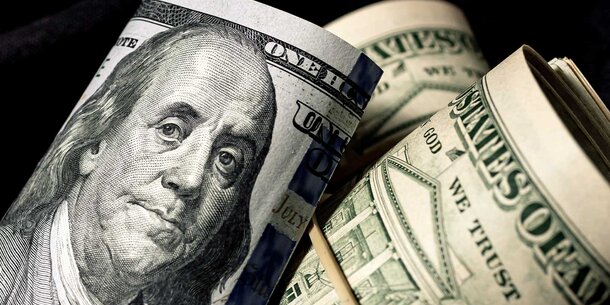The 2020 federal election is on pace to be the most expensive in history, with a projected price tag that could approach $11 billion. And so far, it has seen more spending from outside groups than ever before.
One factor that remains undetermined is the role that “dark money” spending will play in the 2020 race, which, similar to 2012, pits an incumbent president against a well-funded opponent. Notably, 2012 saw more than $300 million in dark money spending at the federal level, with around one-fourth of it from groups linked to the Koch brothers.
Dark money refers to election-related spending that cannot be traced to its original source. According to the Center for Responsive Politics, $67 million in dark money has already been spent in the 2020 federal election. Dark money is untraceable because it often comes from nonprofits that are not required to disclose their donors. And as of May 2020, dark money became even darker. Now these shadowy nonprofits do not have to disclose donors of $5,000 or more to the IRS, thanks to a new rule issued by the Trump administration. Most dark money spending in elections by nonprofits are lawful but awful.
But would-be dark money spenders should know that if a nonprofit is suspected of being part of a crime, law enforcement can still peel it open like an orange. We know that in part because of the trials and travails of former Trump campaign manager and one-time White House adviser Steve Bannon.
He stands accused of bilking hundreds of thousands of donors to the “We Build the Wall” effort out of millions of dollars along with co-defendants who have also been charged by the U.S. Postal Inspection Service and the Department of Justice. As Inspector-in-Charge Philip R. Bartlett said of the indictments, “This case should serve as a warning to other fraudsters that no one is above the law, not even a disabled war veteran or a millionaire political strategist.”
One of Trump’s campaign promises as a candidate in 2016 was that the United States would build a wall and that Mexico would pay for it — an assertion that was soundly dismissed by Mexico’s president after Trump was elected. As it turns out, Congress has no appetite to pay for a border wall either and has failed to include funding for it in budget after budget. This led the president to try to redirect funds that were supposed to go to the military or FEMA to wall construction on the southern border. This last effort has been tied up in court as litigants have raised issues from separation of powers to taking clause claims to stop the wall’s construction.
Enter the enterprising Bannon with a supposed plan to privately fund the wall by raising money and donating it to the federal government for use in wall construction. The We Build the Wall project (whose webpage is strangely still up) sounded promising enough to hundreds of thousands of donors who opened up their wallets and donated. They thought the money would go to the wall, but instead, the money allegedly ended up in Bannon’s and his co-defendants’ pockets.
According to the indictment, Bannon and his co-defendants repeatedly and falsely assured the public that they would “not take a penny in salary or compensation” and that “100% of the funds raised . . . will be used in the execution of our mission and purpose.”
But according the DOJ’s press release about the case, through a nonprofit “under his control,” Bannon “received over $1 million from We Build the Wall, at least some of which [he] used to cover hundreds of thousands of dollars in [his] personal expenses.” The nonprofit at issue in the case was the Citizens of the American Republic, a dark money group founded by Bannon with a stated goal of promoting economic nationalism and American sovereignty.
Then there was another nonprofit involved in the alleged scheme — a new organization called We Build the Wall Inc. — which raised millions of dollars on a crowdfunding webpage from donors who were originally told the recipient of their money would be the federal government. Then the group changed its messaging to push for a privately built wall. New donors clearly ignored the obvious problems that a private entity would likely have if it tried to clear hundreds of miles of title permissions along an international border, and they gave millions more.
According the indictment, the whole point of running money from the We Build the Wall Inc. through Citizens of the American Republic was to conceal the fact that Bannon and his other co-defendants were getting paid even though fundraising emails promised that 100 percent of the money would go toward building the wall.
The plot thickens as Citizens of the American Republic was also reportedly paying Jason Miller, who is now a Trump campaign advisor. Back in 2018, the Citizens of the American Republic’s original plan was to spend in primary campaigns. According to the New York Times, the organization “would spend between $25 million and $30 million — though some advisers predicted a budget as large as $100 million — to seed the primary campaigns. Half the budget was slated to be spent on voter mobilization efforts on the ground in targeted districts for months leading up to elections, with the other half going toward advertising, according to people familiar with the plan.”
Prosecutors are seeking forfeiture of all of the bank accounts for We Build the Wall Inc., the bank account of Citizens of the American Republic, and a $800,000 yacht named “Warfighter.” So perhaps at the end of the day, the federal government will end up with the money from the We Build the Wall effort after all.
The views expressed are the author’s own and not necessarily those of the Brennan Center.



